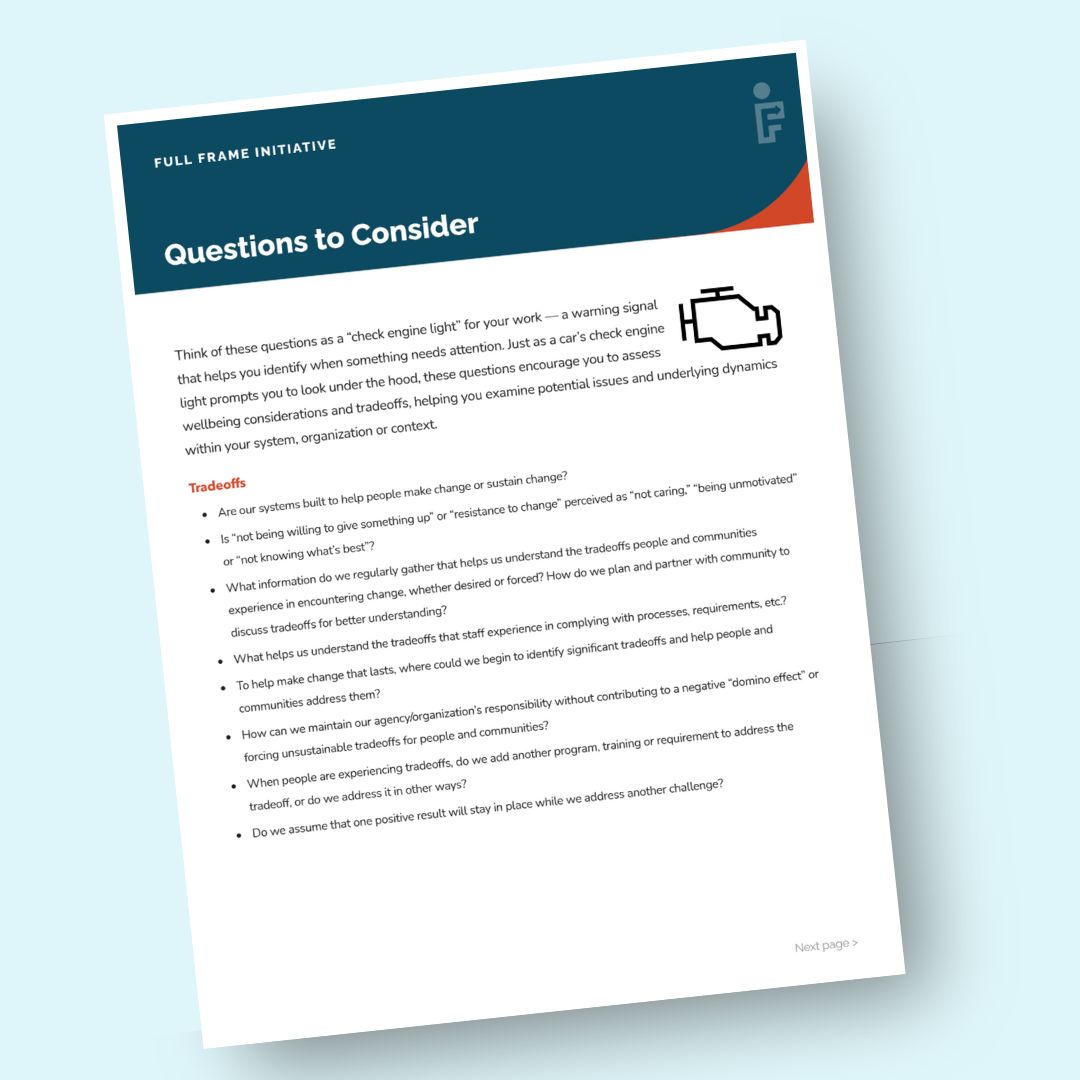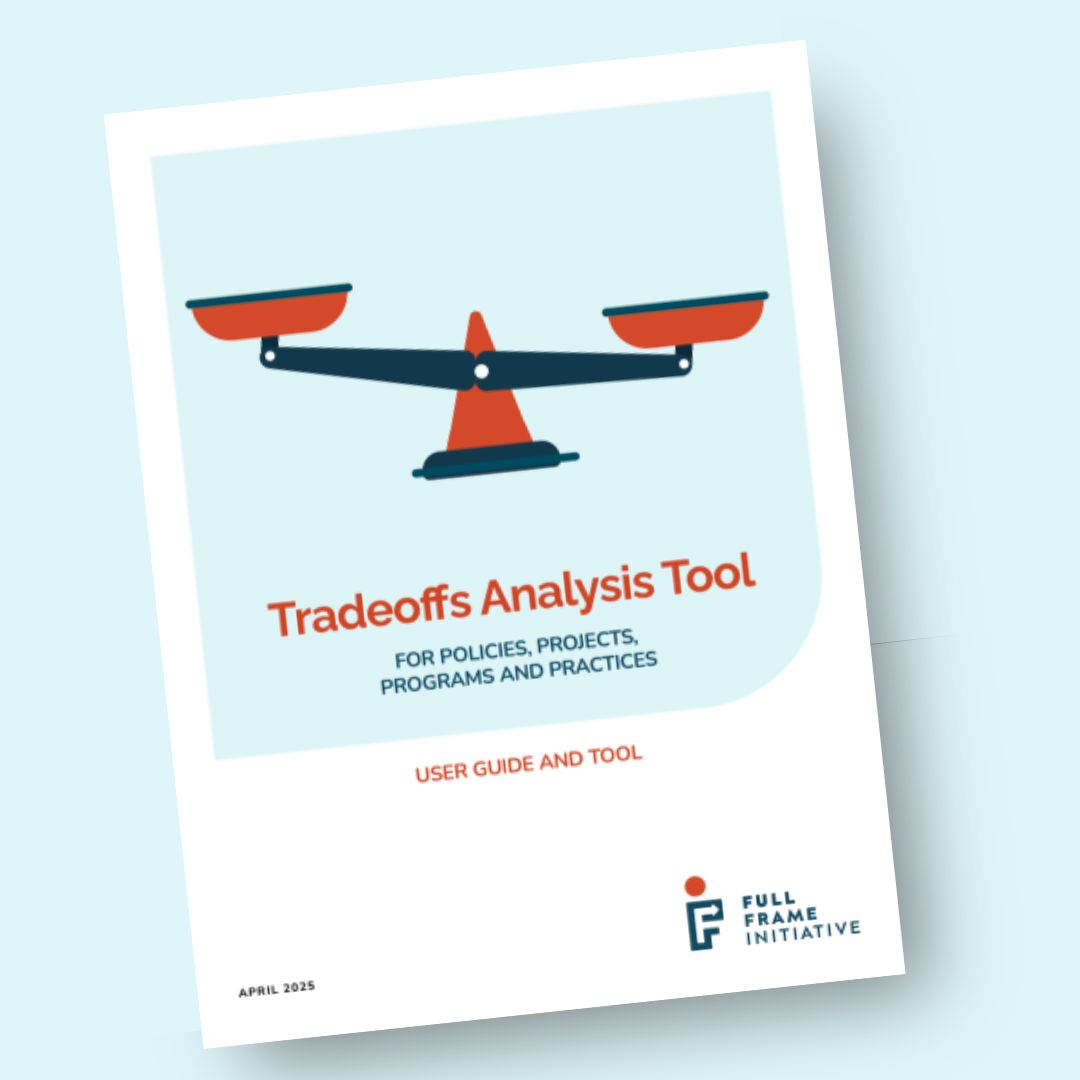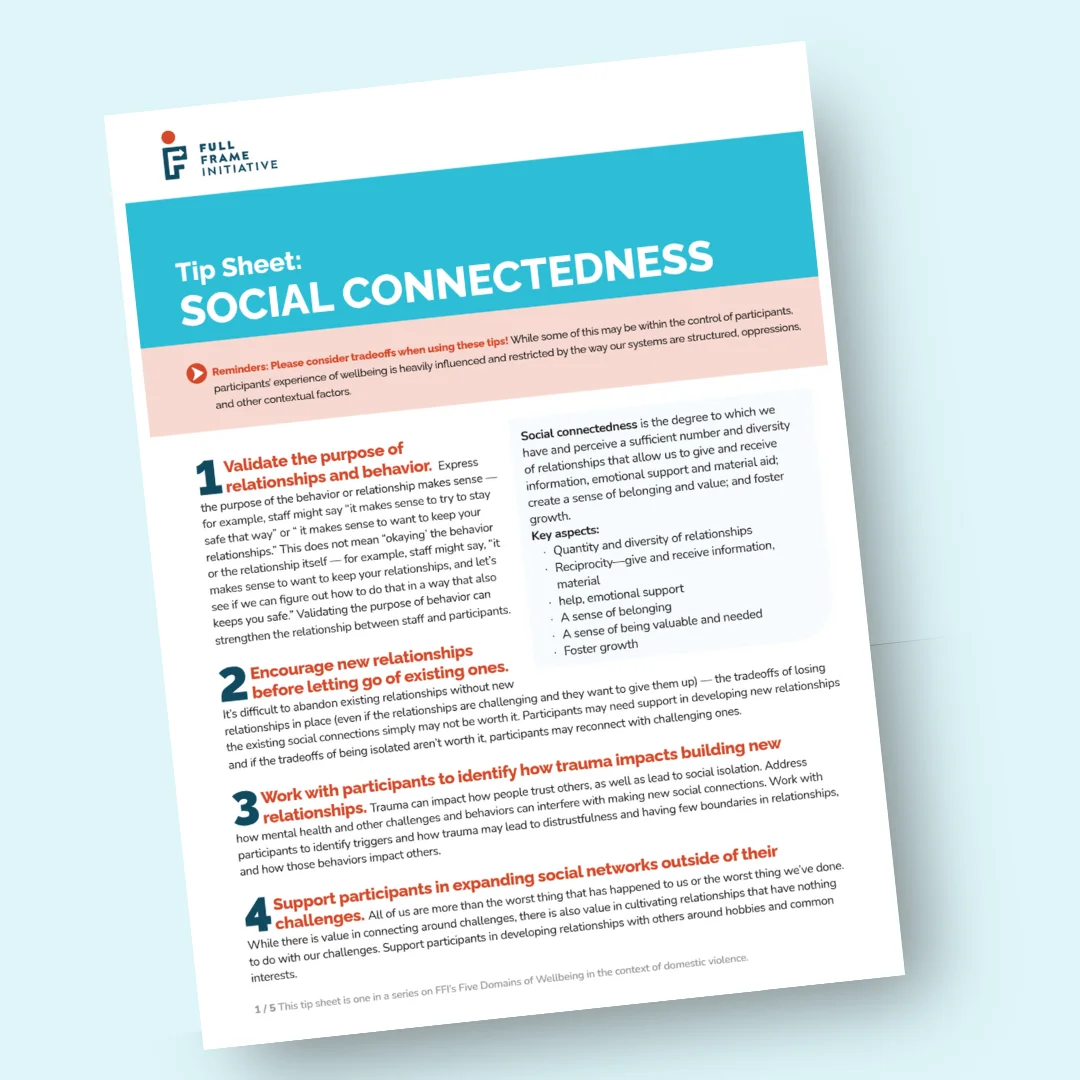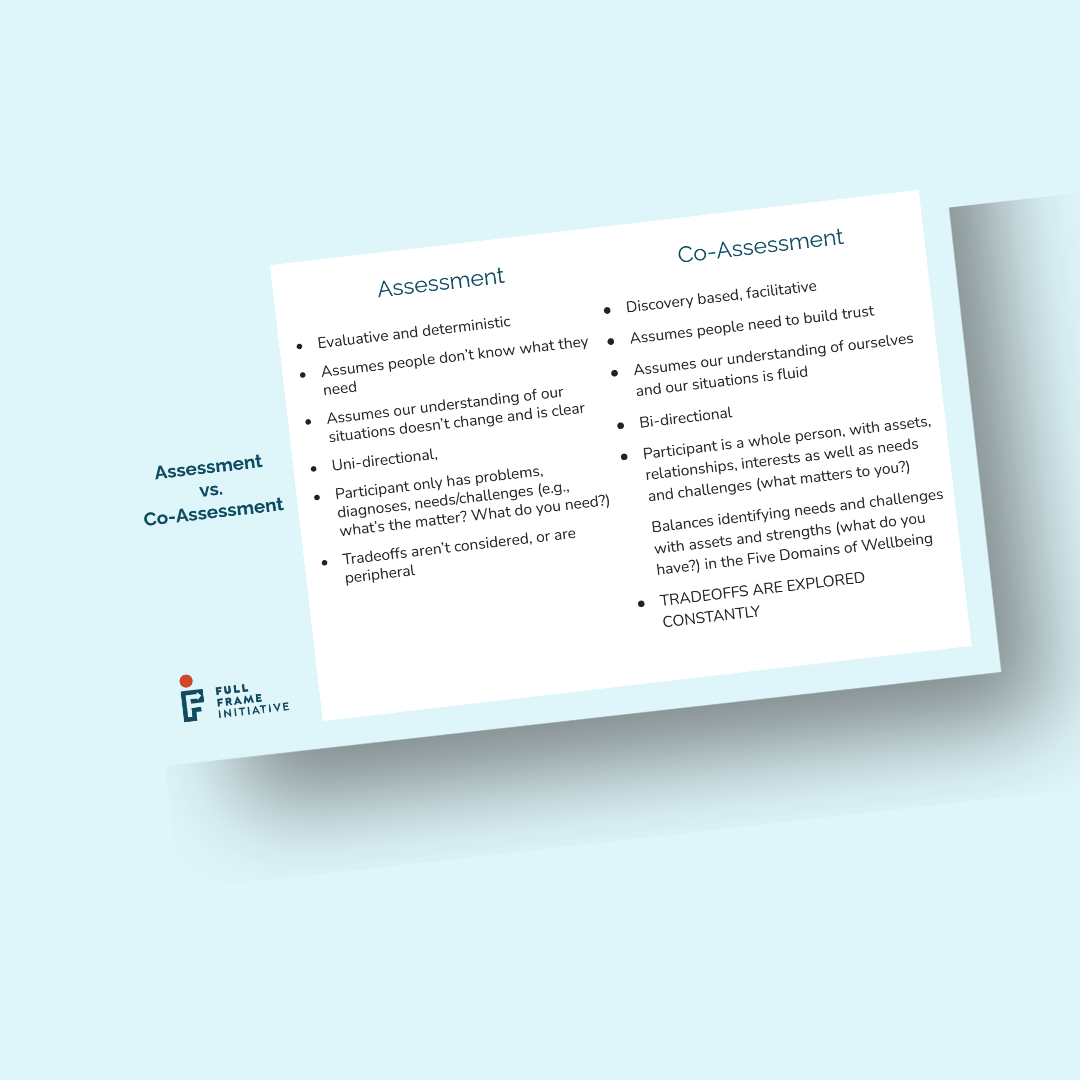
This tool offers a set of questions related to tradeoffs and the Five Domains of Wellbeing that you can use as a “check engine light” for you and your work.

Use this tool to identify how a specific policy, project, program or practice will impact different stakeholders’ wellbeing, allowing you to anticipate and address unsustainable tradeoffs.

Learn how domestic violence practitioners can shift from a singular focus on short-term safety toward increasing survivor safety in the context of creating opportunities to support long-term wellbeing.

Download the tips sheet for definitions of each of the five domains of wellbeing and how to connect them to supporting survivors of domestic violence.

Template for a treatment plan for youth interacting with the juvenile justice system.

Rethink how you engage with others and center wellbeing with this kit designed for organizations and individuals who are interested in revamping intakes, assessment and engagement processes.

Download the tips sheet for definitions of each of the five domains of wellbeing and how to connect them to supporting youth wellbeing.

This slide compares non-trauma-informed, trauma-informed, and wellbeing-centered approaches, emphasizing that wellbeing design must be rooted in trauma-informed care.

This resource is a collection of examples that connects behaviors with the Five Domains of Wellbeing and explains how the same underlying behavior can be connected to a different domain.

This slide illustrates the difference between traditional case management and plan facilitation that focuses on what matters to the individual and shifts power.

This slide illustrates the difference between safety planning and wellbeing planning to support the case planning process with the wellbeing framework embedded.

This slide illustrates the difference between traditional assessment and using co-assessment with the wellbeing framework embedded.